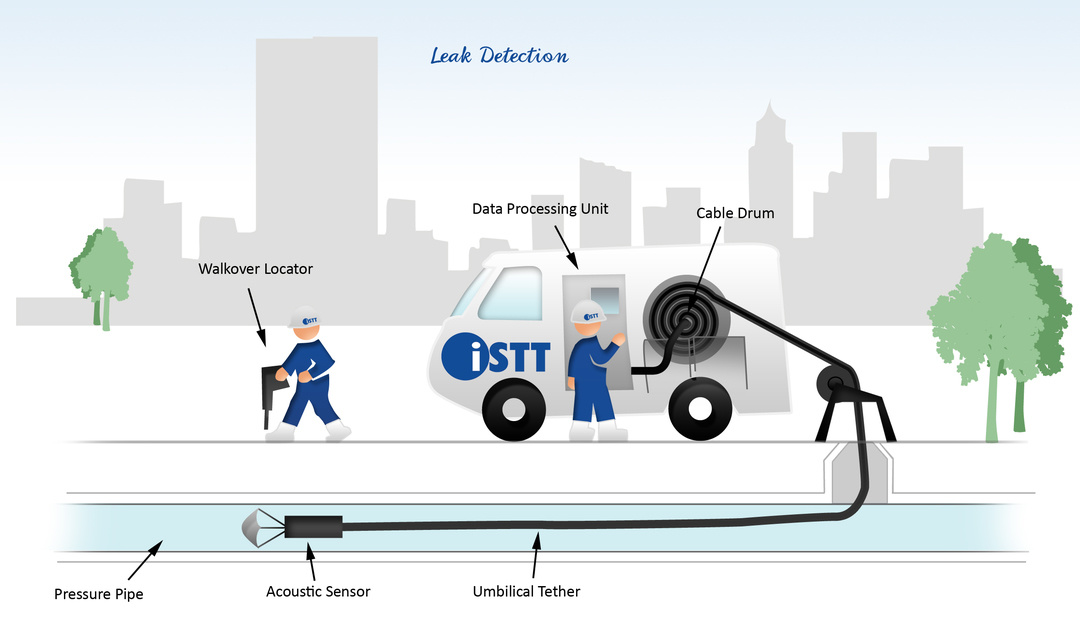- Leak Detection
-
There are a number of methods for surveying and locating leaks in pressurized pipes. Methods vary from simple hand-held acoustic receivers operated above ground to in-pipe, free-swimming leak detectors. The system most suited for the job will depend on the type of utility service to be investigated, the area of investigation, and the nature of the problem. All leak detectors use the acoustic profile created by pipe fluid as it escapes the pipe to indentify and locate leaks in pressurized pipes. The intensity of the sound associated with a leak will depend on internal operating pressure of the pipe and the pipe material and diameter. For measurements recorded at the surface, the depth of the soil over the pipe, the soil type and compaction, and the surface coverage also affect the loudness and the frequency range of the sound made by a leak.Surface leak surveys and detection using leak noise probes and ground microphones are best suited for locating leaks in distribution water pipelines at depths of approximately one meter or less below the surface. Probes or microphones convey the sound to frequency-filtered amplifiers, which transmit the filtered-sound to headphones or monitors. The operator walks the path of the pipeline or measures the intensity of the sound at visible components of the system such as hydrants, or valves. Microprocessors may also be used to locate leaks by analyzing sounds picked up by sensors placed on two or more external points or appurtenances on the pipe.Two leak detection systems exist for locating leaks and gas pockets by deploying sensors within the pipe. One system employs an in-the-pipe acoustic sensor tethered to monitoring equipment located above ground, which traverses the pipe with the product flow. The second system uses a free-swimming sensor that also travels with the product flow. These in-pipe systems provide an accurate location of leaks, since the sensor passes over the leak as it traverses the pipe. The in-pipe systems can be used in both small and large diameter pipes but are best suited for surveying large-diameter transmission mains, which transmit sounds poorly and have limited access points. The acoustic sensor of the tethered system is inserted through small taps into the pressure pipe. The sensor, which is attached to the surface by an umbilical tether, is propelled through the pipe by the flow of the pipe product. Acoustical data is transmitted via the umbilical tether to the operator who determines the approximate location of the defect. The operator uses an above ground tracking tool to pinpoint the defect within a few inches.

A second in-pipe system uses a free swimming sensor to locate leaks and gas pockets. The free swimming sensor system can cover long distances in a single deployment and is particularly well suited for the survey of and leak detection in large transmission lines with limited access points. The free-swimming system employs a sensory system housed in a round soft ball that travels with the flow of the product through the pipe. The free-swimming system calculates the location of the defect by detecting and analyzing ultrasonic pulses emitted from the sensor and captured by receivers attached to the pipe appurtenances. Once the sensor is retrieved from the pipeline, software is then used to evaluate the acoustic data producing a report on the location and size of the leaks or gas pockets.
The International Society for Trenchless Technology
 Cart
Cart
